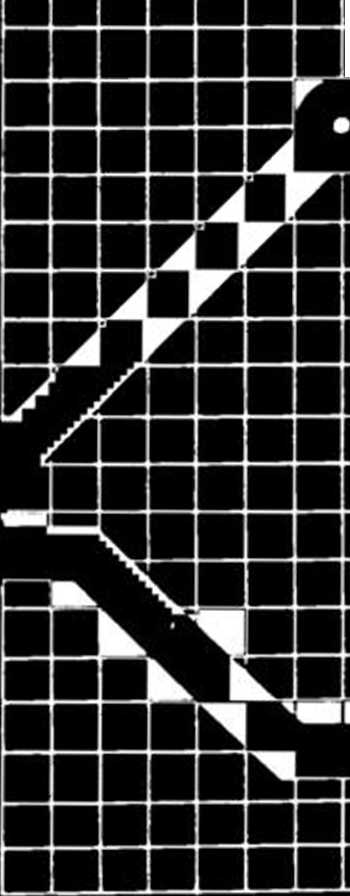6926475820
ter. Many CAD packages will give quite good results with a relatively Iow cost dot-matrix printer, providing it can per-form graphics. But if you can afford one, a laser printer will generally give better results because of its greater resolution (typically 300 dots/inch, com-pared with about 80 dots/inch). This as-sumes that the CAD package you’re using knows how to drive the laser printer to achiese the better resolution, of course, but most of the latest packages are capable of doing this.
The altemative to a printer is an X-Y plotter. Plotters are generally capable of rather better results, particularly the morę expensive variety — but they do tend to be very expensive. For a lot of applications, the extTa cost isn*t really justified.
In many professional CAD applications, a dot-matrix printer is used to get “working draft” copies of the CAD system output designs. Then when all seems well, the designs are sent in the form of files on floppy disk or magnetic tape to a bureau with a photoplotter, to produce the finał “pretty” artwork. This can be a very cost-effective solution, al-lowing you to get the excellent quality available from a photoplotter without being up for its heavy Capital cost.
A SHORT GLOSSARY OF CAD TERMS
CAD: Either computer-aided design, or computer-aided drafting. The use of a Computer system as a tool for either the engineering design of a product, or at least for producing circuits, patterns, drawings or plans.
CAE: Computer-aided engineering. A term used by some instead of CAD, to mean the wider use of a Computer system as an engineering design tool. CAM: Computer-aided manufacturing. The use of computers to control manufacturing processes, preparing programs for machinery such as robots and numerically controlled machinę tools.
CIM: Computer integrated manufacturing. The technique of tying together all of a manufacturing organisation’s computers, includmg those controlling the manufacturing itself, so that they communicate directly and form an integrated system.
CNC: Computer numerical control, often shortened to NC. Used to described machinę tools and process plant designed to be controlled automaticałly by a programmable Computer using digital data files.
ICONS: The display symbols used in CAD Systems to represent the components of the system or graphics they’re being used to design or draft. Usually stored in databases, known as "icon libraries". Alternative icon libraries can be used to adapt the CAD system for different applications.
NET LIST: A shorthand description of the components in a CAD design or graphic file, and their interconnections. With CAD Systems used for electronic Circuit design and PC board pattern routing, the net list is generated by the module used to draw the schematic Circuit, and then used by the automatic PCB routing module.
SIMULATION: A feature provided by some of the morę advanced CAD packages for electronic Circuit design, whereby the system is able to show you how the finał Circuit will perform. __
artwork. However this is not often needed, and you can probably get the scanning done for you by an outside bureau on the rare occasions that it is. £>
It’s possible that in some cases you might need a scanner, for feeding spe-cial custom symbols into the CAD drafting package library, direct from
contract pcb assembly
|
i | |
|
i | |
|
\M | |
|
m |
■ |
|
■ | |
™ i—i—i—i—i—r~i—i—i—i—i—i M

ELECTRONICS,Australia. September 1987
SPECIALISTS OFFERING THE PRODUCTION FACILITY AND FLEXIBILITY TO CREATE YOUR IDEAS OR SOLVE YOUR PROBLEMS.
FROM PROTO-TYPE TO VOLUME.
mach systems
70 KEYS ROAD, MOORABBIN 3189 555 0133
97
Wyszukiwarka
Podobne podstrony:
00273 ?c3052422913f10cb5772bda659a367 275 Some Guidelines for Designing an Industria) Experiment co
img314 EVERYMAN AMD MEDIEVAL MIRACLE PLAYS Everyman. Good Deeds, your counsel I pray you give me. Go
2.1 Introduction This chapter will give you a brief orientation of the nodes and their functions in
66890 ipe 31 15-Minute Program The daily program of planned exercise lliat follows will give you max
14 1 Many factors have influence on good results in negotiations. lt depends on good preparatio
38 Sociełe des Nations — Recueil des Traites. 1933 4. In reąuesting that Your Excellency will b
50 (84) 242 Chapter 6 EXERCISES Exercise 6.1 (a) Give two good reasons for involve
mus dev(7) 02 MONEY TALKS ! ! I will give $5,000 to anyone if he will prove that the photographs of
position parameters as measured by a hydrophone array, it will give the least achievable mean-square
14 1 Many factors have influence on good results in negotiations. It depends on good preparatio
78177 musc devfp MONEY TALKS I will give $5,000.00 to anyone if he will prove that the photographs o
A LOOK OVERSEAS / ROZDZIAŁ: WESTERPLATTE SEES WAR’S ENDINAWEEKI Vienna Confident Russia Will Give Po
48145 musc dev051 tion, bul progressive exercising will give you a fine muscular deveiopment, streng
GCT08G01 BMP Quit THE BUTTONS Screen 5 of 5The fourth button, Help, will give you information on how
więcej podobnych podstron